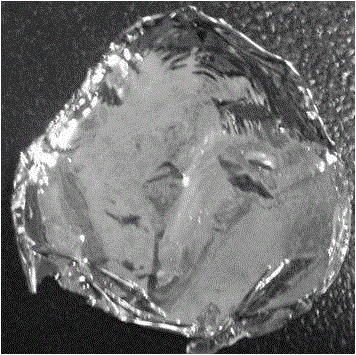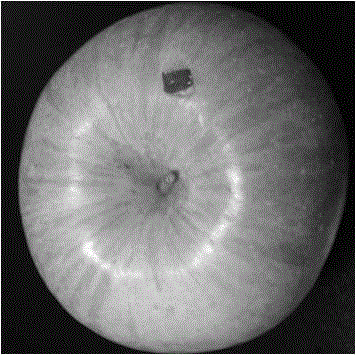Method for rapid in-situ detection of object surface pollutants
An object surface and in-situ detection technology, which is applied in the detection field, can solve the problems of inability to realize rapid in-situ detection of pollutants on the surface of objects, failure to excite pollutant Raman signals, difficulty for laser to penetrate the support layer, etc., to achieve rapid on-site detection. Effects of in-situ detection, enhanced adsorption and enrichment capacity, and convenience for on-site sampling
- Summary
- Abstract
- Description
- Claims
- Application Information
AI Technical Summary
Problems solved by technology
Method used
Image
Examples
Embodiment 1
[0031] 1) First take 15ml of freshly prepared nano-silver-coated gold particle solution in a 25mL beaker and put it into the rotor;
[0032] 2) Then add 3ml of toluene and cyclohexanone mixed solution containing 5% polystyrene to the nano silver-coated gold particle solution to form an oil-water interface;
[0033] 3) Gently stir the nano-silver-coated gold particle solution through the rotor, so that the nano-silver-coated gold particles float to the oil-water interface, and self-assemble into an assembly;
[0034] 4) After the organic solvent in the upper layer is volatilized, the polystyrene film containing the nano-assembly is taken out, and finally a flexible, semi-transparent surface-enhanced Raman substrate is obtained.
Embodiment 2
[0036] 1) First take 15ml of aqueous solution in a 25mL beaker;
[0037] 2) Then add 3ml of cyclohexane solution containing 5% polymethyl methacrylate to the aqueous solution to form an oil-water interface;
[0038] 3) Then slowly inject the concentrated nano-gold ethanol solution into the oil-water interface to form a nano-gold assembly;
[0039] 4) After the upper layer of cyclohexane volatilizes, the polymethyl methacrylate film containing the nano-gold assembly is taken out, and finally a flexible, semi-transparent surface-enhanced Raman substrate is obtained.
Embodiment 3
[0041] 1) First, soak the flexible, semi-transparent surface-enhanced Raman substrate prepared in Example 1 in a 1 mM thiolated β-cyclodextrin solution for 5 hours;
[0042] 2) Then wash the substrate with deionized water, stick it on the surface of the apple after cleaning, and rub it back and forth to increase the enrichment ability of the substrate to pollutants;
[0043] 3) Then use a portable Raman spectrometer to perform a Raman spectrum scan on the apple with a surface-enhanced Raman substrate;
[0044] 4) Finally, through the detected Raman signal, it is judged whether there are pesticides and other pollutants on the apple surface.
PUM
 Login to View More
Login to View More Abstract
Description
Claims
Application Information
 Login to View More
Login to View More - R&D
- Intellectual Property
- Life Sciences
- Materials
- Tech Scout
- Unparalleled Data Quality
- Higher Quality Content
- 60% Fewer Hallucinations
Browse by: Latest US Patents, China's latest patents, Technical Efficacy Thesaurus, Application Domain, Technology Topic, Popular Technical Reports.
© 2025 PatSnap. All rights reserved.Legal|Privacy policy|Modern Slavery Act Transparency Statement|Sitemap|About US| Contact US: help@patsnap.com



